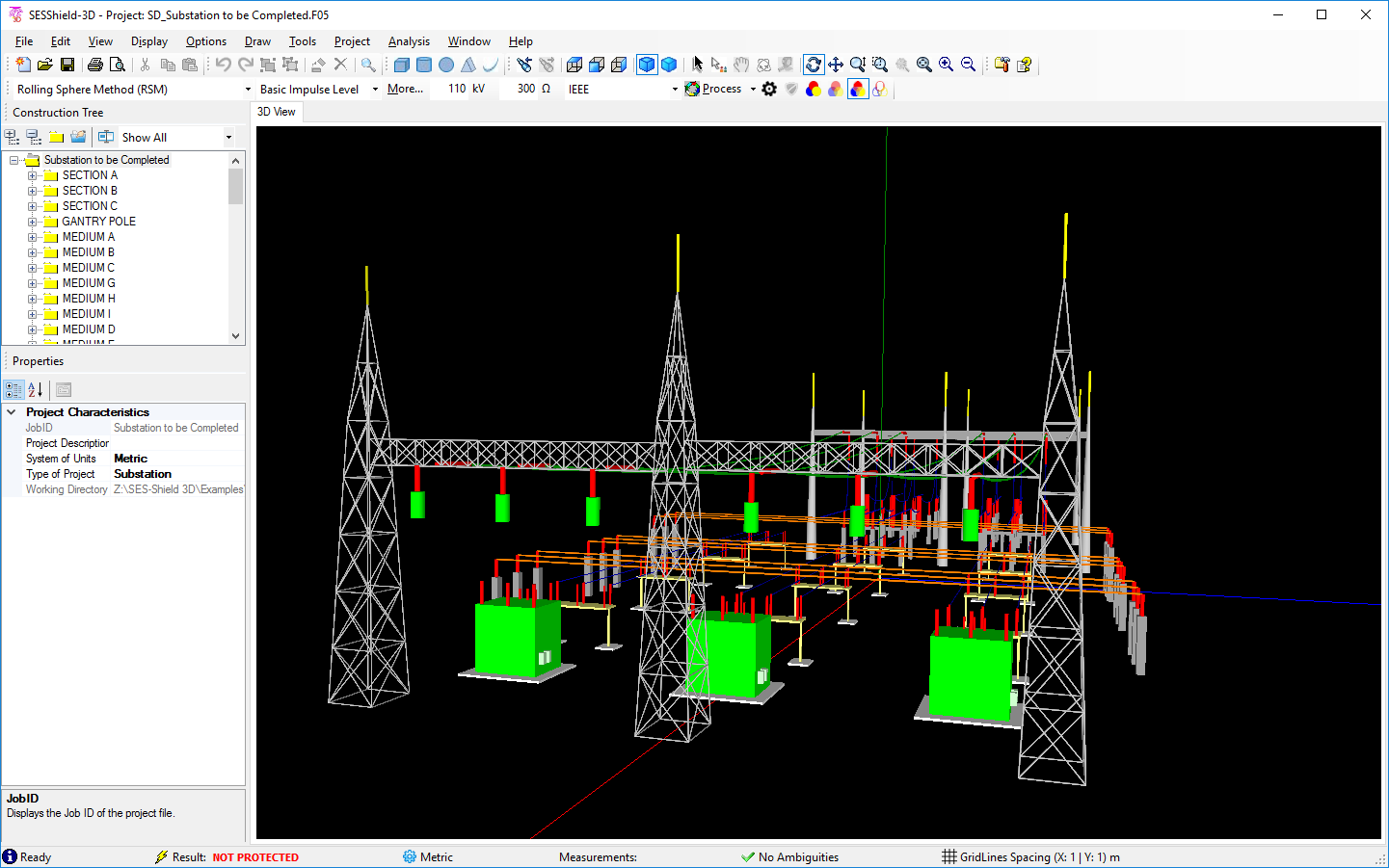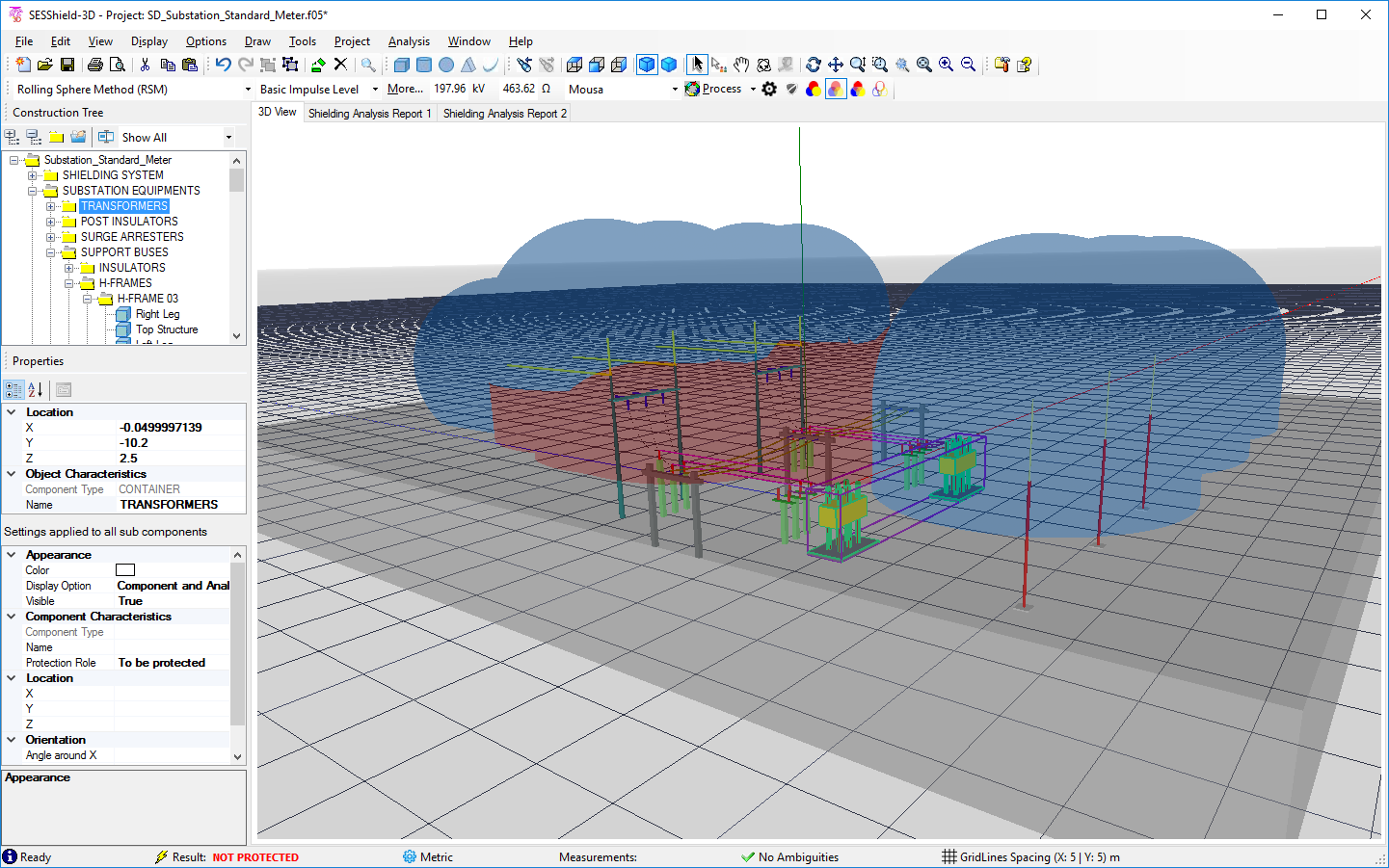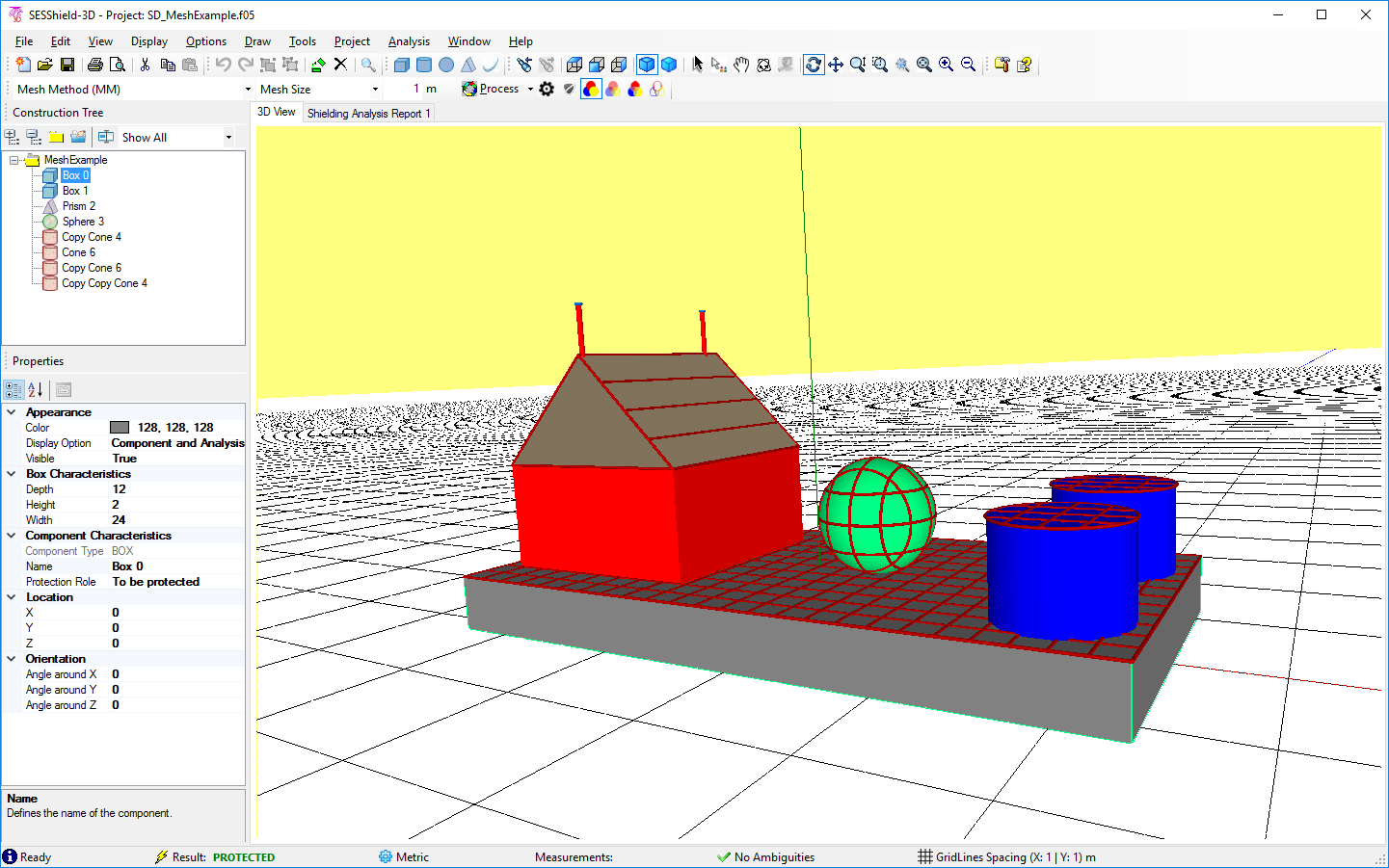SESShield-3D
SESShield-3D is a software package dedicated to the analysis and design of systems for shielding against lightning strikes in complex 3D environments.
Included Software ToolsSESShield
Technical Description
SESShield-3D is a powerful software package for the analysis and design of lightning shielding protection systems in complex 3D environments, including substations, power plants, industrial plants and other such installations, accounting for the presence of power lines, equipment, and buildings. SESShield-3D allows arbitrary metallic structures to act as shielding systems, including not only shield wires and masts, but also other structures that attract lightning.
SESShield-3D offers a simple and intuitive graphical user interface that can be used to carry out a complete lightning shielding analysis for a system of freely positioned objects having various geometrical shapes, such as: catenaries, cylinders, cones, cubes and other prisms. Furthermore, calculations are extremely rapid and provide clear, interactive, 3D graphical feedback, so that a shielding system can be designed quickly and efficiently.

Rendering of an Electric Substation
SESShield-3D Capabilities
SESShield-3D can be used to analyze and design a lightning shielding system for the protection of vulnerable systems of arbitrary geometries. It can also assess the probability of failure of a lightning protection system, accounting for the statistical distribution of lightning in the area of the system to be protected.
Lightning Shielding Methods
SESShield-3D supports five Shielding System Positioning Methods (SSPM). These methods, described in IEEE[1] and IEC[2] standards, include:
A shielding failure analysis option is also available to determine the rate of shielding failure based on lightning data specified by the user.
Functionalities
The program uses an object-oriented approach to describe the geometry that allows you to select, copy, paste and delete the objects.
The following figures illustrate four of the shielding methods that can be used with SESShield-3D:
Formal Risk Assessments (in Accordance with IEC 62305-2)
SESShield-3D is the ideal software tool to model arbitrary complex 3D systems, design their lightning shielding systems using industry-accepted methods, and to perform shielding failure analyses. However, this software package cannot be used to conduct formal risk assessments in accordance with procedures described in IEC 62305-2. Such risk assessments can be carried out with either the SESShield application or with the more advanced SESShield-2D software package.
SESShield Pro
SESShield Pro is a software package that includes both SESShield-2D and SESShield-3D, and thus is the optimal solution for risk assessments and for analyzing and designing lightning shielding systems.
[1]
IEEE Std-998 - IEEE Guide for Direct Lightning Stroke Shielding of Substations
IEEE Std-1243 - IEEE Guide for Improving the Lightning Performance of Transmission Lines
[2]
IEC Std-62305-1 Ed. 2.0 - Protection Against Lightning





